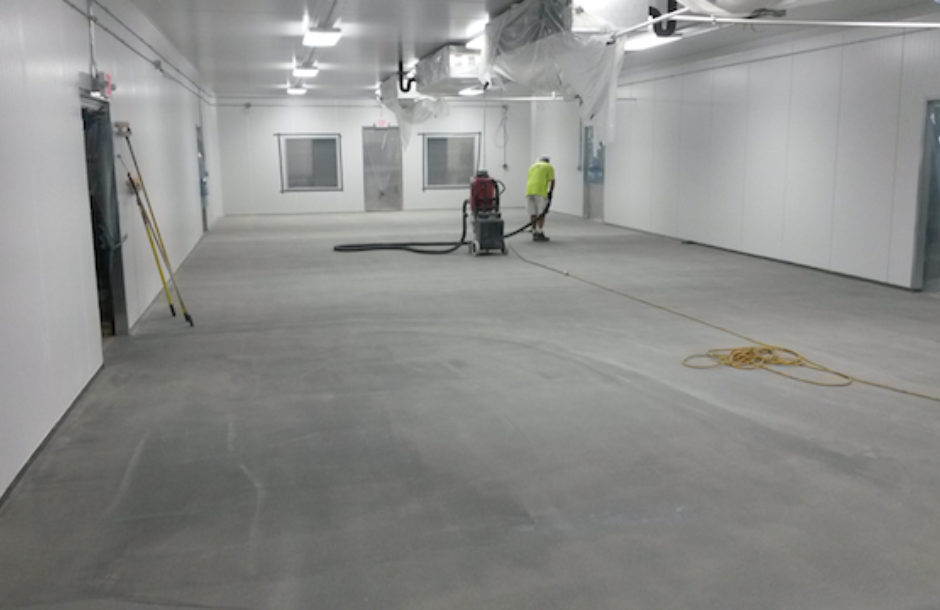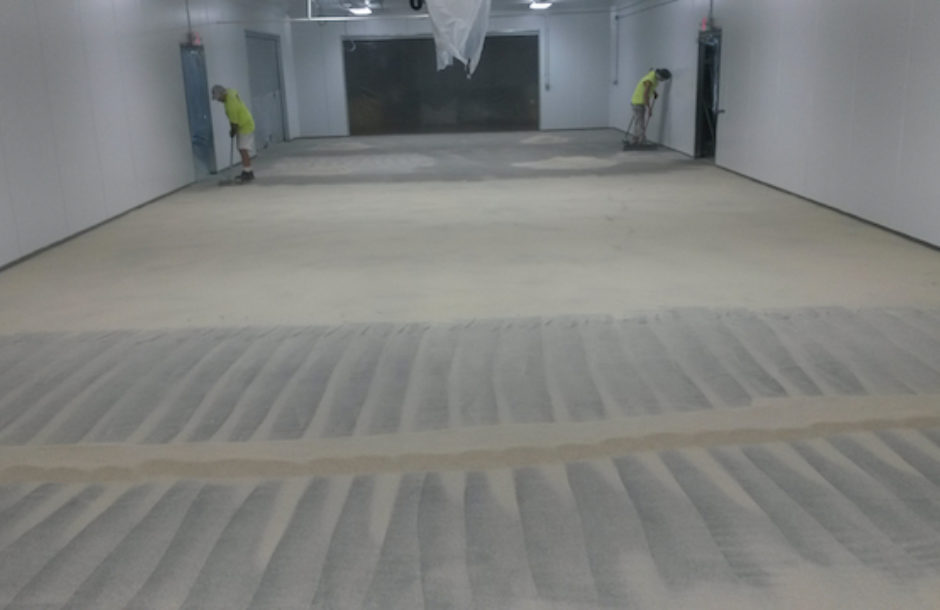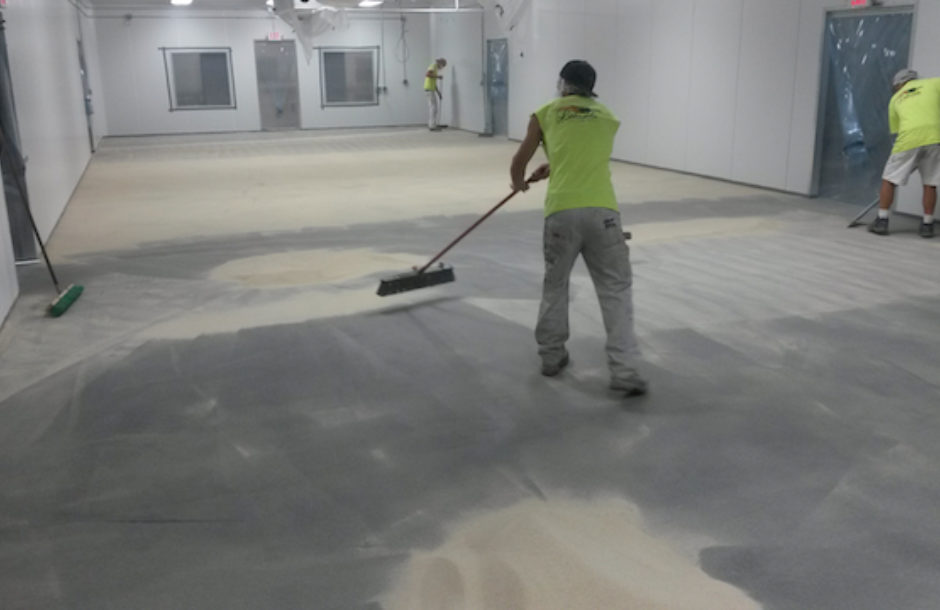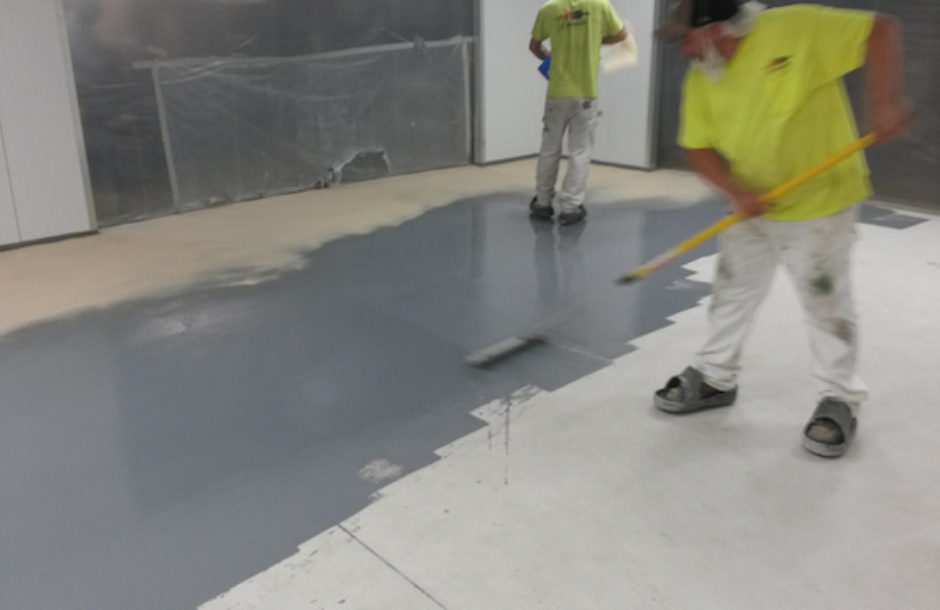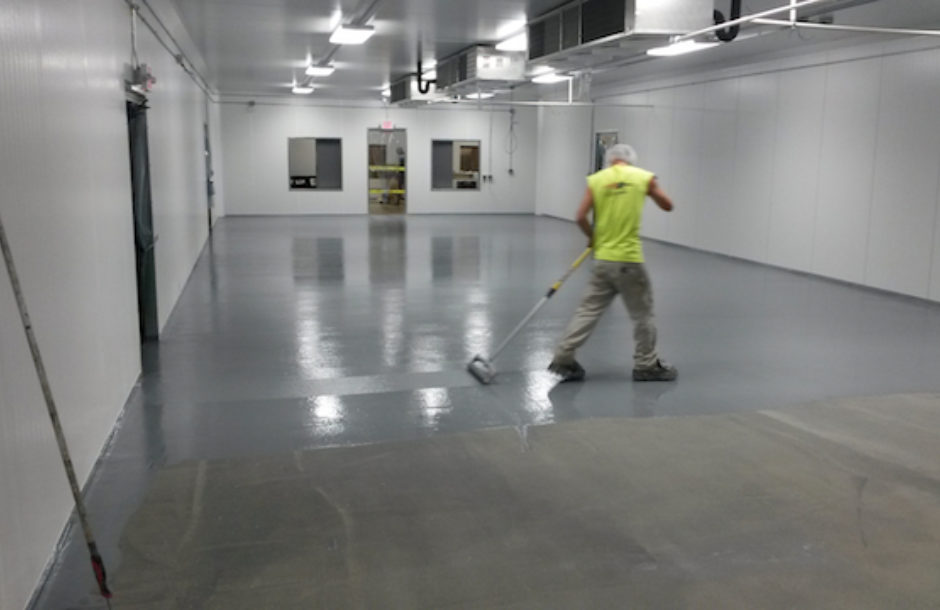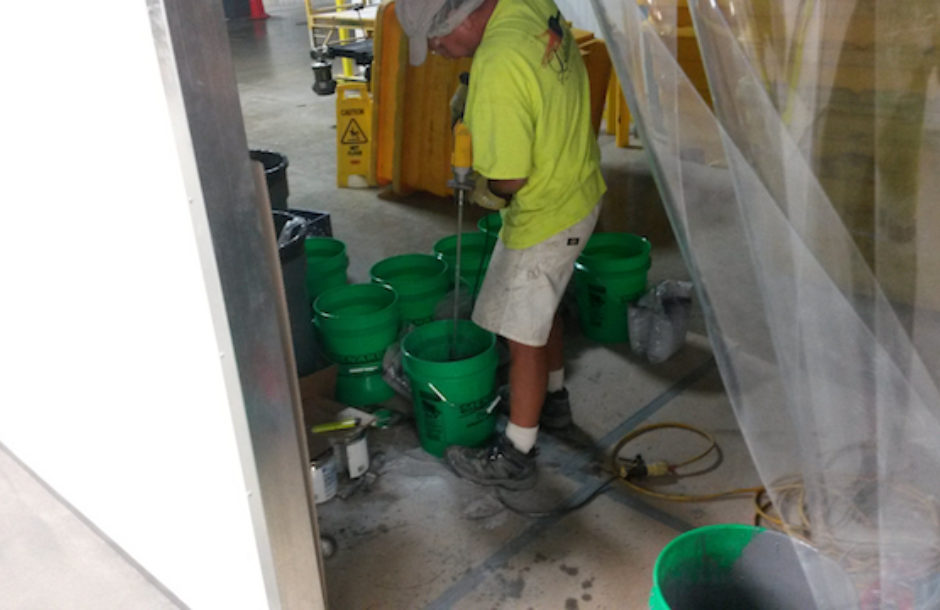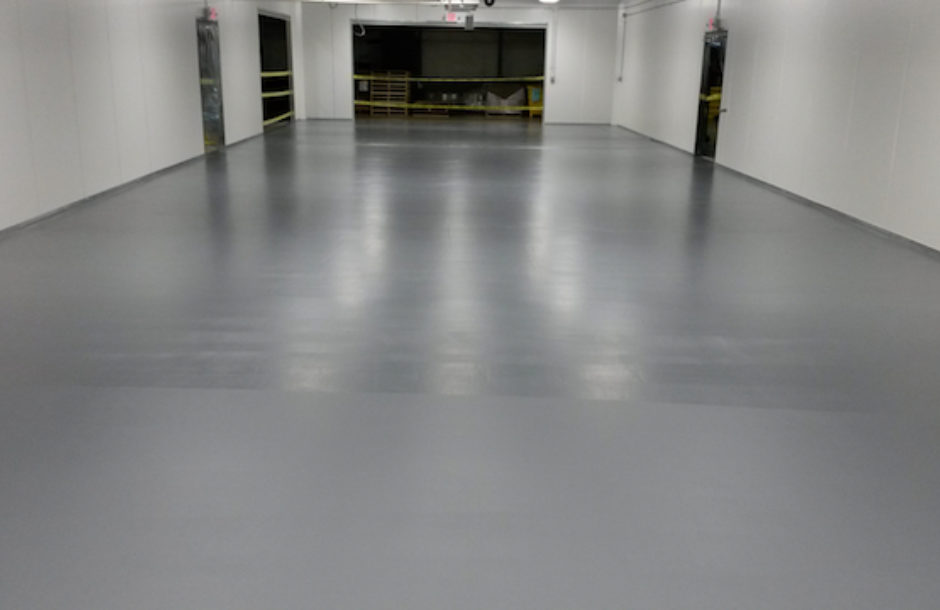Cementitious Urethane Floor Systems for Food Service Industries
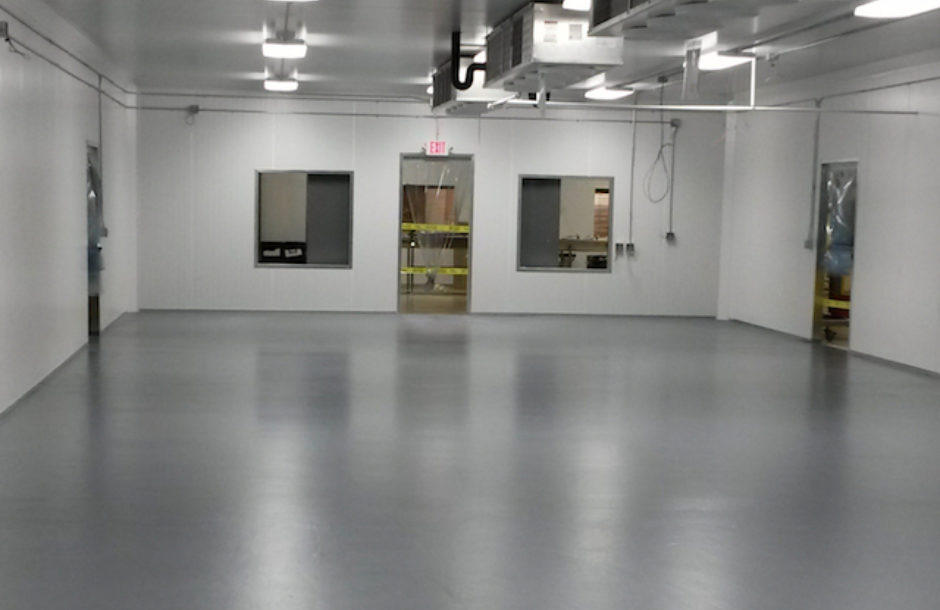
In the last blog, we talked about the precautions that need to be undertaken for Food Service Industry Floorwork and showed you a slideshow of photos from a Concrete Polishing project at a commercial bakery in Milwaukee, Wisconsin. In Part 2, we’re going to focus on a very specific type of flooring — Cementitious Urethane. (The photos in the slideshow above show the finished concrete floor finishing project for that very commercial bakery.)
What Is Cementitious Urethane and How Does It Work?
Also referred to as “urethane mortar” or “urethane concrete”, cementitious urethane floors are installed as an alternative to quarry tile. (You typically see these tiled floors in restaurant kitchens, for example). Urethane concrete features cement and water-based materials that can also include antimicrobial additives to help kill bacteria.
With food, bacteria is Enemy #1. This is true anywhere, whether at home or in a restaurant, but even more critical for food manufacture, packaging, and distribution facilities. Regardless of whether it’s a brewery, a bottling plant, a meatpacking plant, or any other food industry facility, keeping bacteria out of all processes is absolutely critical.
The best way to do this is by applying a Cementitious Urethane Flooring System. One of the most robust, reliable, and long-lasting floor systems available to the food industry, Lakeside Painting has a great deal of experience installing these floor systems for our food manufacturing and distributing customers.
Below is a list of Cementitous Urethane’s many other positive features:
- Fast return to service
- Heat and chemical resistant
- Impermeable (non-porous)
- Impact, abrasion, and slip-resistant
- Does not crack
- Eco-friendly
- Easier to clean and maintain than alternatives
- USDA/FDA/OSHA compliant
Fast Return to Service
Cementitious Urethane cures quickly. Its re-coat window and full cure time are shorter than epoxy floor systems, which can translate into saving multiple days on a project.
Heat Resistance
Most foodservice industries use very hot water and/or steam to clean their facilities. For this environment, epoxy floor systems are not a good choice, as they fail when subjected to high temperatures. Cementitious Urethane, on the other hand, is heat and steam-resistant.
And because Cementitious Urethane is thermal resistant, it can expand and contract along with the underlying concrete (substrate) when there are vast temperature fluctuations. And it won’t crack or let moisture (or vapors) and bacteria in during the process.
Eco-Friendly
Another upside to Cementitious Urethane flooring is that they can be eco-friendly. Some of these products are made of renewable plant-based oils, and without heavy metals, formaldehyde and other chemicals.
For more information on what we can do for your restaurant, head over to our Restaurant Painting Services page.
